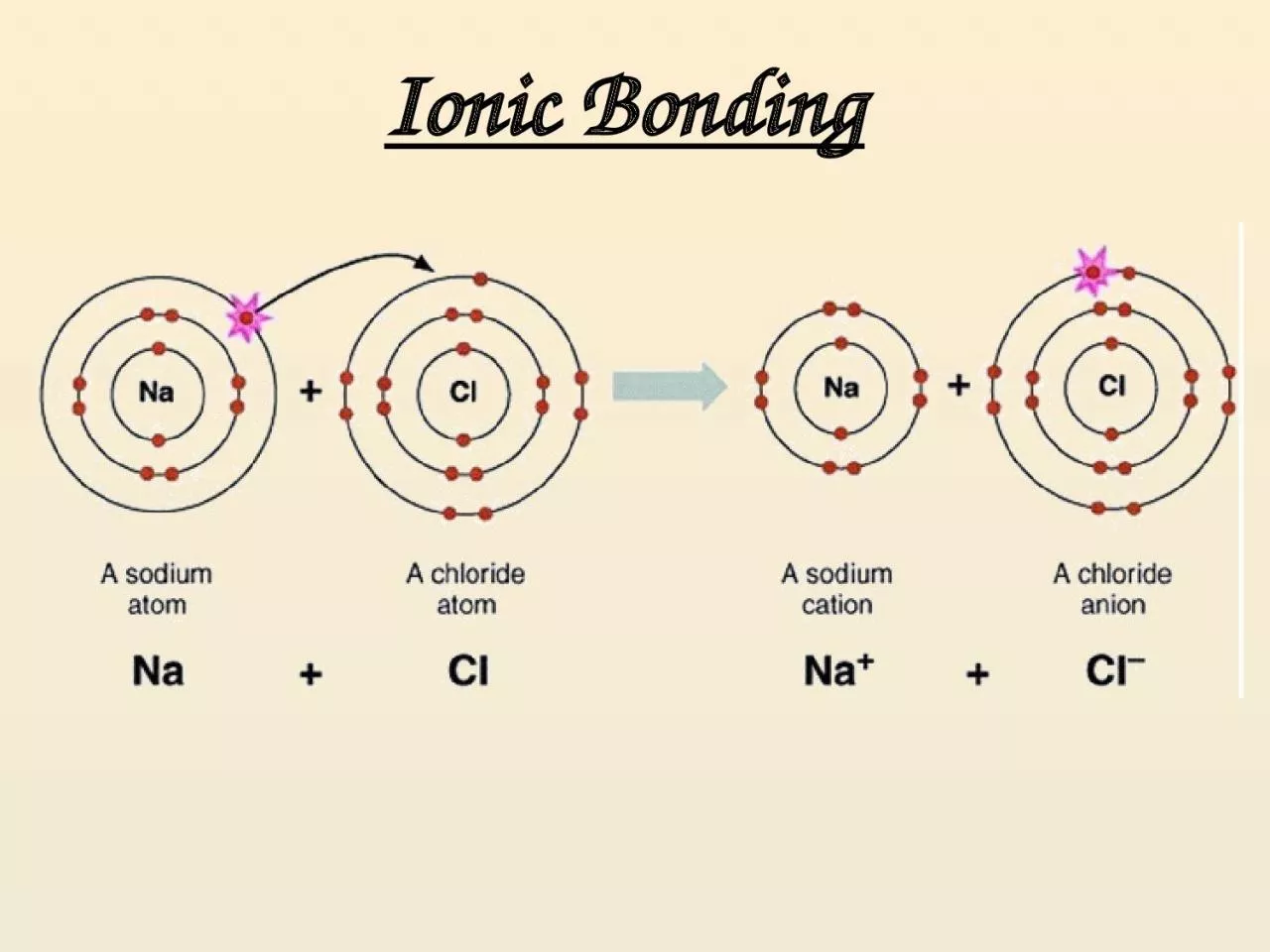

Students know atoms combine to form molecules by sharing electrons to form covalent or metallic bonds or by exchanging electrons to form ionic bonds Students know salt crystals such as ID: 915474
Download Presentation The PPT/PDF document "Ionic Bonding Ga Standards" is the property of its rightful owner. Permission is granted to download and print the materials on this web site for personal, non-commercial use only, and to display it on your personal computer provided you do not modify the materials and that you retain all copyright notices contained in the materials. By downloading content from our website, you accept the terms of this agreement.
Slide1
Ionic Bonding
Slide2Ga
Standards
Students know
atoms combine to form molecules by sharing electrons to form covalent or metallic bonds or
by exchanging electrons to form ionic bonds.
Students know
salt crystals, such as
NaCl
, are repeating patterns of positive and negative ions held together by electrostatic attraction.
Slide3Bonds
Forces that hold groups of atoms
together and make them function
as a unit.
Ionic bonds – transfer of electrons
Covalent bonds – sharing of electrons
Slide4The Octet
Rule – Ionic Compounds
Ionic compounds
form
so that each atom, by
gaining or losing electrons, has an octet of electrons in its highest occupied energy level
.
Metals lose electrons to form positively-charged
cations
Nonmetals gains electrons to form negatively-charged anions
Slide5Ionic Bonding:
The Formation of Sodium Chloride
Sodium has 1 valence electron
Cl
:
1s
2
2s
2
2p
6
3s23p5
Na: 1s22s22p63s1
Chlorine has 7 valence electrons
An electron transferred gives
each an octet
Slide6Ionic Bonding:
The Formation of Sodium Chloride
Cl
-
1s
2
2s
2
2p
6
3s23p6 Na+ 1s
22s22p6This transfer forms ions, each with an octet:
Slide7Ionic Bonding:
The Formation of Sodium Chloride
Cl
-
Na
+
The resulting ions come together due to electrostatic attraction
(
opposites attract)
:
The net charge on the compound must equal zero
Slide8Examples of Ionic compounds
Mg
2+Cl
-
2
Na
+
2
O
2-
Magnesium chloride:
Magnesium loses two electrons and each chlorine gains one electron
Sodium oxide: Each sodium loses one electron and the oxygen gains two electronsAl3+2S2-3Aluminum sulfide: Each aluminum loses two electrons (six total) and each sulfur gains two electrons (six total)
Slide9Metal
Monatomic
Cations
Ion name
Lithium
Li
+
Lithium
Sodium
Na
+
Sodium
Potassium
K
+
Potassium
Magnesium
Mg
2+
Magnesium
Calcium
Ca
2+
Calcium
Barium
Ba
2+
Barium
Aluminum
Al
3+
Aluminum
Slide10Nonmetal
Monatomic Anions
Ion Name
Fluorine
F
-
Fluoride
Chlorine
Cl
-
Chloride
Bromine
Br
-
Bromide
Iodine
I
-
Iodide
Oxygen
O
2-
Oxide
Sulfur
S
2-
Sulfide
Nitrogen
N
3-
Nitride
Phosphorus
P
3-
Phosphide
Slide11Sodium Chloride Crystal Lattice
Ionic compounds form
solid
crystals
at ordinary temperatures.
Ionic compounds organize in a characteristic crystal lattice of alternating positive and negative ions.
All salts
are ionic compounds
and form
crystals.
Slide12Properties of Ionic Compounds
Structure:
Crystalline solids
Melting point:
Generally high
Boiling Point:
Generally high
Electrical Conductivity:
Excellent conductors, molten and aqueous
Solubility in water:
Generally soluble